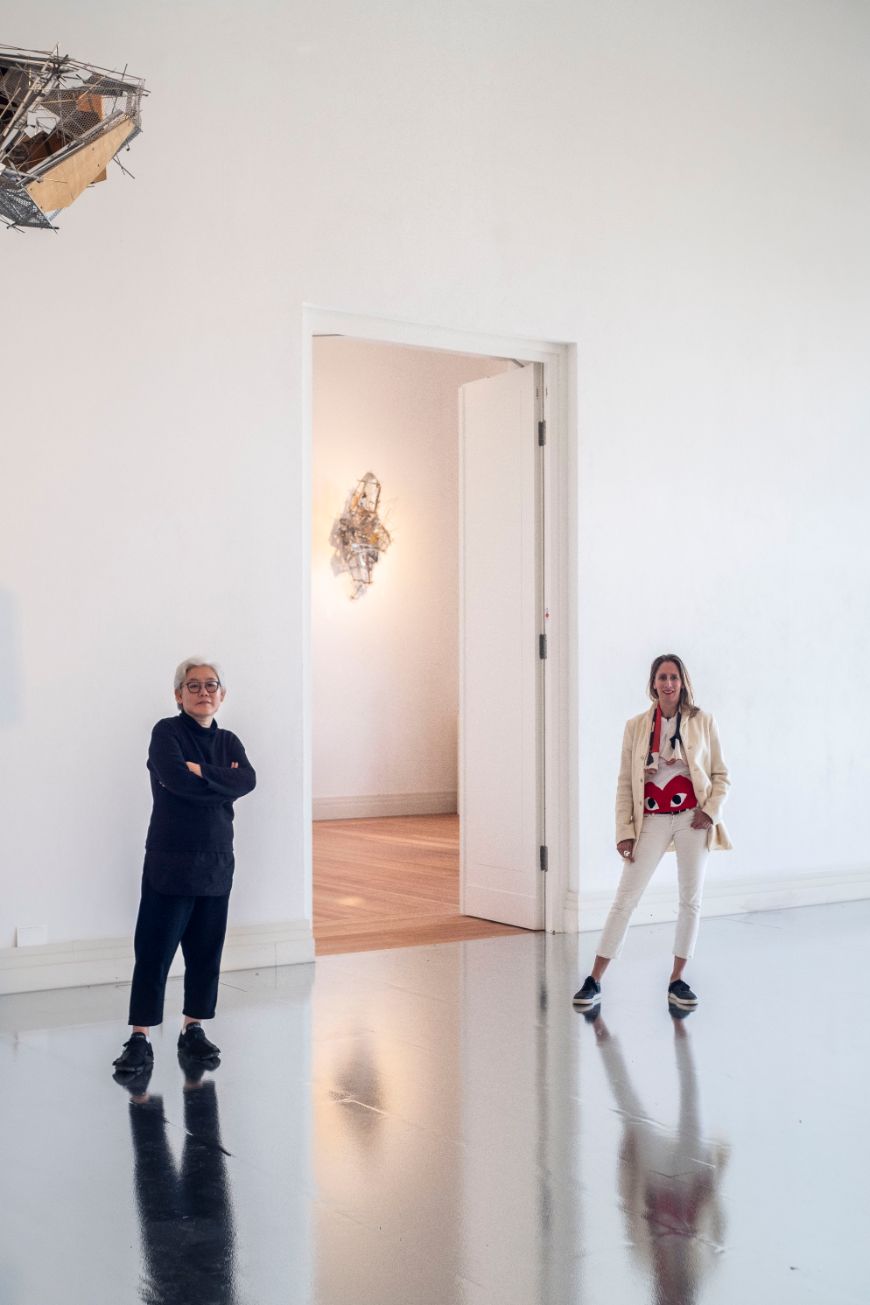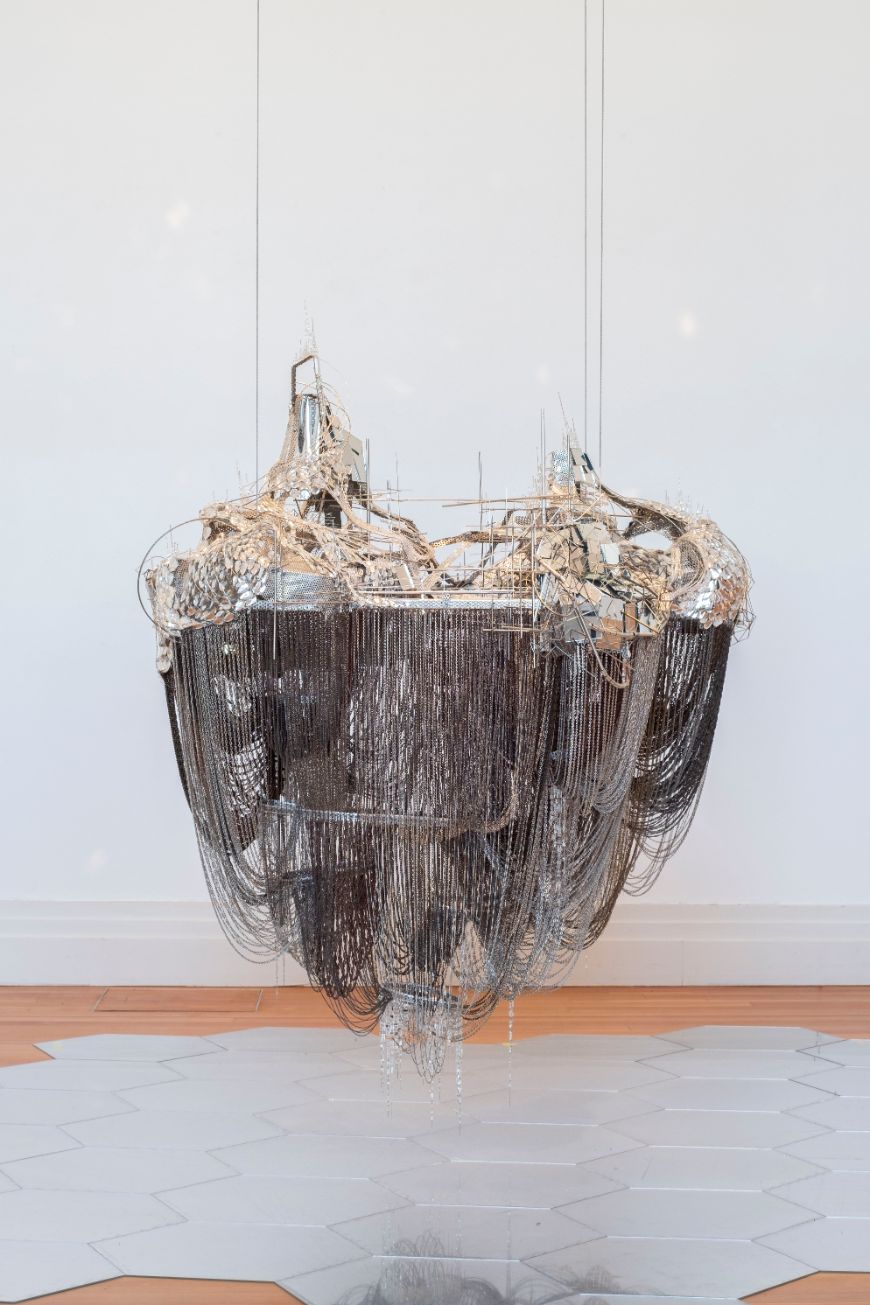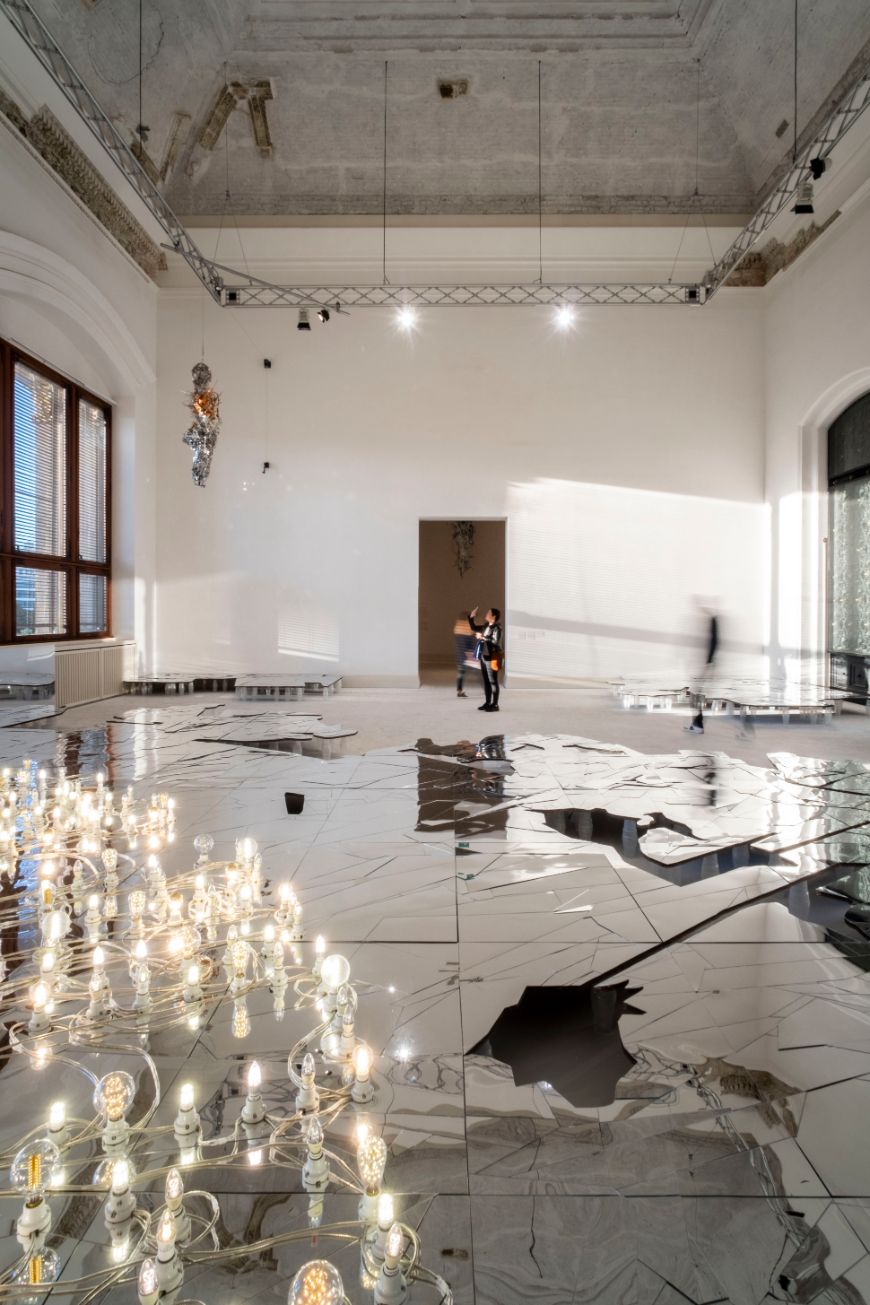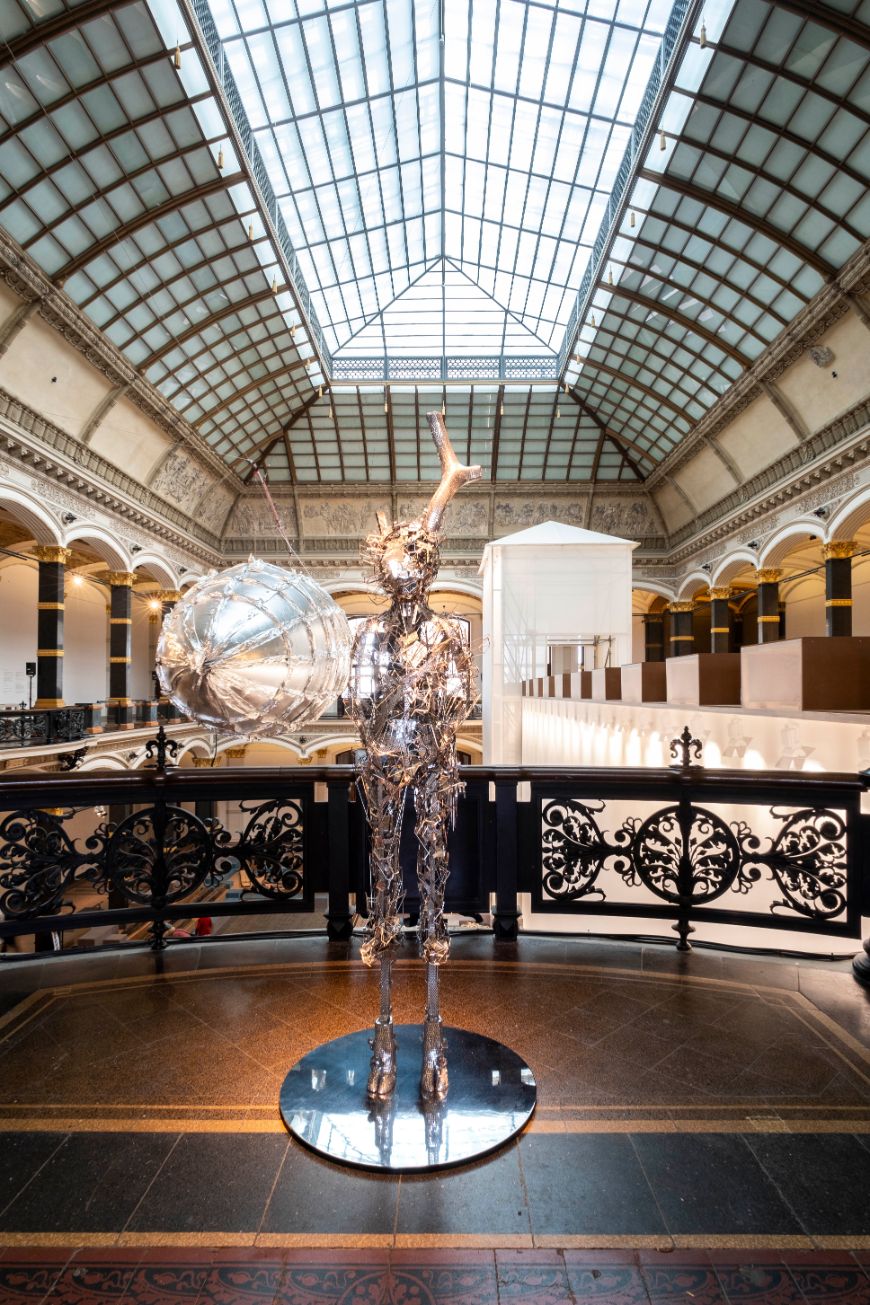Text | Gropius Bau 2018
“A Feeling about Freedom”
Lee Bul in conversation with Stephanie Rosenthal

Lee Bul is one of the most important Korean artists of her generation, having received significant international recognition for her formally inventive and intellectually provocative work. From 29 September 2018 to 13 January 2019, the Gropius Bau presents Crash, her first solo exhibition in Germany.

Ausstellungsansicht Lee Bul: Crash, Gropius Bau, 2018 Foto: Mathias Völzke
LEE BUL: The outside, the outer world that surrounds me, the environment that is a part of me, has been an interest probably from about the time a consciousness of my self began to develop. Not as in ‘me-versus-the-world’, but more ‘me-and-the-world’ or ‘me-in-the-world’. That has been the focal point of my questions and interests. I think it has something to do with the fact that my family moved constantly when I was little. It meant that I often found myself placed amongst strangers, and that I was constantly reminded of the fact that my life was unlike the lives of others. That my conditions were different. I developed a sense of distance because of it. I was affected by the outside world but I could not really understand it, while at the same time wanting to make sense of it.
When you say you have problems with the outside world, are you talking about political and ethical concerns?It was exactly that – political and ethical concerns. I grew up under a military regime. My parents were opposed to their ideology. The government watched my family. They actually sent a policeman to our home – wherever we moved – every month, and conducted an inspection to check for banned books and so on. Later on, I came to realise that growing up with leftist parents in a country that at the time did not approve of leftist ideas shaped me. On top of that, I had a particular name that kids made fun of, I was left-handed and I was always the new kid in town, a stranger. I had to get used to the unfamiliar, the strange. These conditions I was exposed to were political and ethical. These concepts permeated my life. Being a stranger, an outsider and not the insider, but still playing a part.
So it was hard for you to understand the reality of your life at that time.I probably didn’t question the reality at the time. I was placed in a certain environment and all I could do was try to survive in it. The conditions were a given. But because the world seemed to be contradictory and was not explained to me, I put in a lot of effort and time to make sense of it.
From the 1960s to the 1980s there was a dictatorship in South Korea and ideologically it was very controlled. It was not possible to leave the country. Intellectual people could not work, they could not have a job, they could not set up a company, simply because they had different political views. My mother was an activist so we moved house constantly, at least once a year. I remember when I was around 11 years old, my family moved to a kind of military village. It was really hard to survive there because there was no culture – the settlement had existed for just two years or so. My house almost felt like it was on the road; there was no wall and no garden. It was just a room, so ugly. I grew up in such an environment. My questioning always started from the real, but it was not possible to find ‘real’ answers, so naturally some of my questioning became more conceptual. I think I was already in training.
Do you mean in training to explore your past?No. I was in training to live with contradictions, to survive the inconsistencies.
I didn’t try to remember my childhood for a long time. I think it was when I reached 40 that I tried to remember! Most of my childhood memories relate to landscape, but not just to nature. There was a bunker, an event, dust, some neighbours... I drew it and it looked like a map. Then I realised, okay, so my interests are very strongly related to my childhood, the 1960s and 1970s, the rapid modernisation of Korea. My life is very strongly connected with the modern. I’m still mapping something – following the memory. My memories are visual.
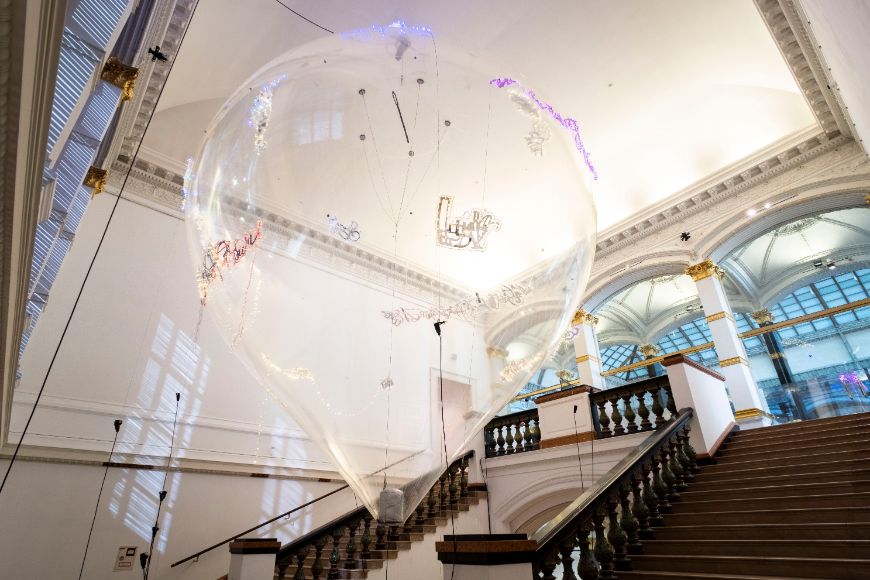
Ausstellungsansicht Lee Bul: Crash, Gropius Bau, 2018 Foto: Mathias Völzke
Yes, I have a younger brother and sister... I was a mother figure to them. When my mother went to jail, I had to make ends meet with the rest of my family. At that time, political criminals were not allowed to assemble in groups of more than five people. She was hanging out with her friends, and it happened to be more than five people, so she was arrested. She was in jail for 36 months before she was released after her court hearing.
Would you say your mother has been a great influence?My mother was Korean-Japanese. She smuggled herself into this country with a bunch of other students when she was a teenager to serve her mother country. It was difficult for her to find ways to sustain herself. She was seen as guilty by association so she couldn’t get a job with a company and she couldn’t work with bigger groups of people. So she turned to work she could do from home to earn a living. She beaded bags and knitted clothes. I was a sickly child so I remember lying down and looking at brightly coloured beads and knitted clothes around me. I grew up watching middle-aged women producing such work. I half-jokingly say that I owe my sense of colour and texture to those times. I use beads in my works because of such memories. People are quick to associate them with decoration, or luxury goods. For me, they represent hard labour.
So in a way, material has always been important for you.I choose what I work with very carefully. Everything has connotations, stories and I utilise them. I borrow the general meanings materials have and embrace them in my work. Many times, things have clashing, conflicting connotations or layers of meanings. Like silk and hair and how mother-of-pearl is created. I like to expose that, or show the conflict and the confrontation. I prefer complicated materials over simple ones. I clash or contrast them in my works.
I’ve worked with leather, silicone and polyurethane. These are related to the concept of skin. My other choices of materials have been velvet, silk and mother-of-pearl because they remind me of organisms. Velvet was first developed to be used in place of hair and fur. But it is made with silk and silk is made from the discharge of silkworms, so it comes from the inside. And mother of pearl may look like a hard shell but it is really an organ, the inside of shellfish. It is created when shellfish try to heal a wound. Materials that are related to organisms, that come from the inside out, interest me.
My environment at the edge of the city was so dusty and grey. It was very violent – typical of modernisation… army families, everybody moving, with no roots or hometown. And there were so many factories. This was a big contrast to [my mother’s] bright beadwork. That may be why I mix things together, conceptually and also materially.
The full-length interview between Lee Bul and Stephanie Rosenthal – illustrated by Alison Sampson – can be found in the exhibition catalogue Lee Bul, published by Verlag der Buchhandlung Walther König.
